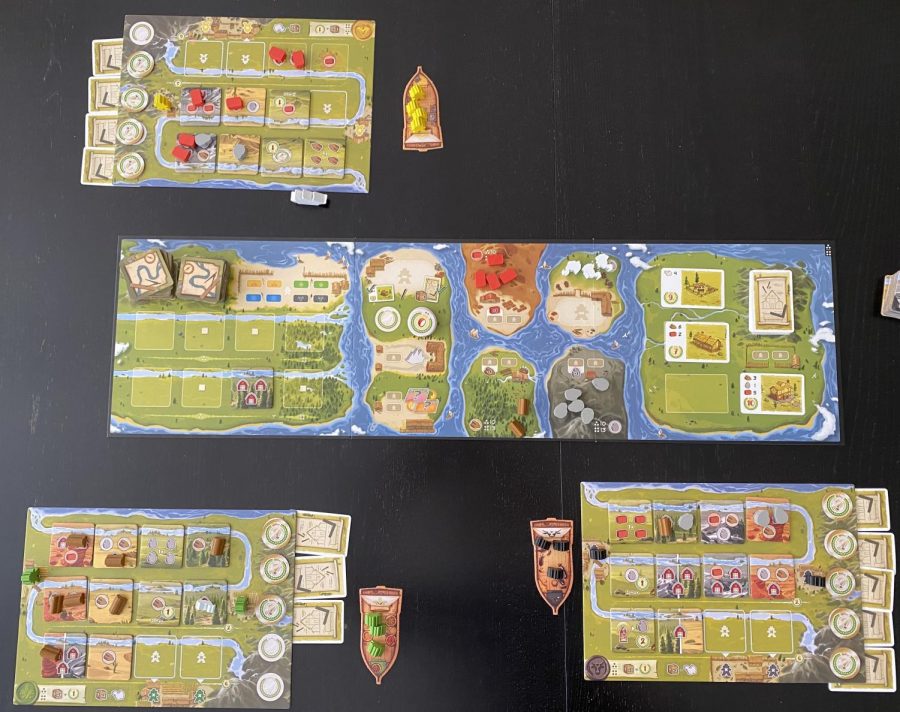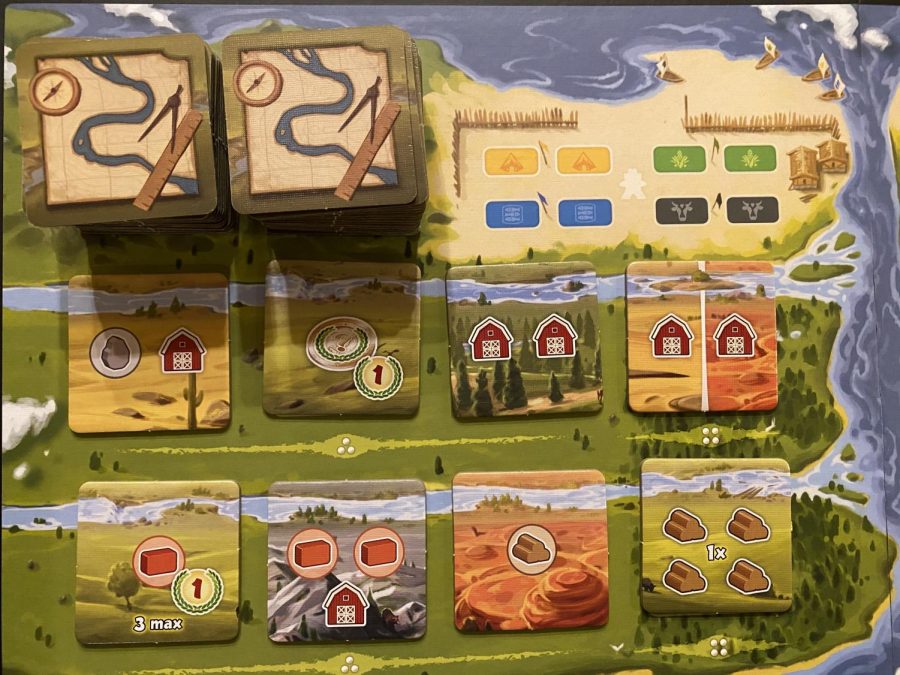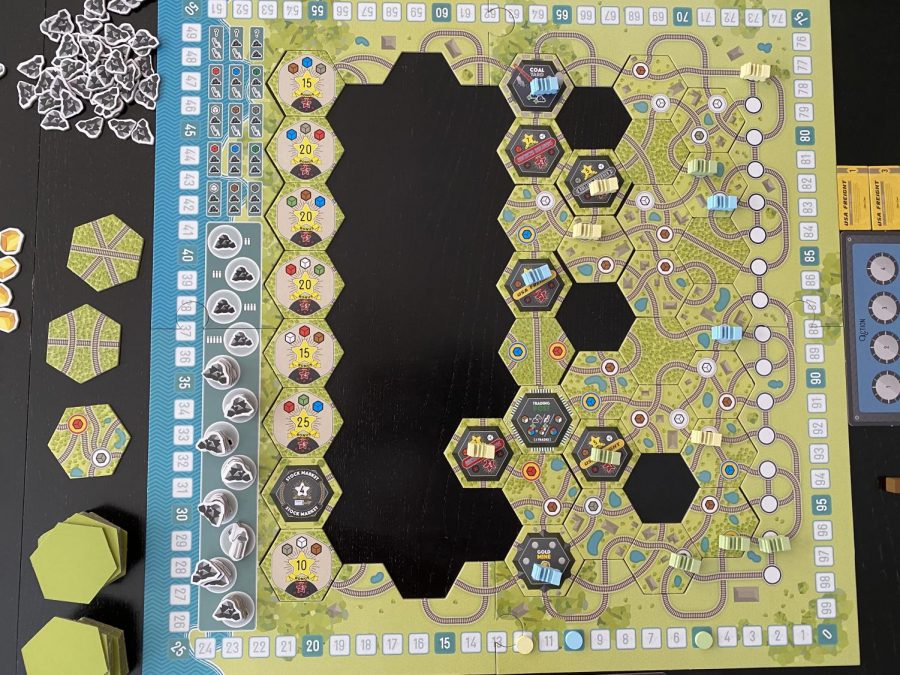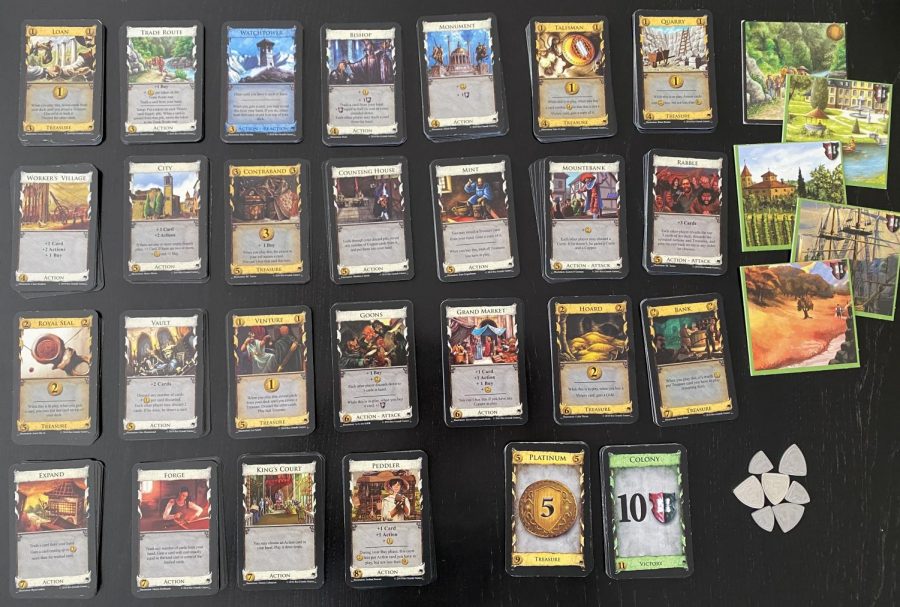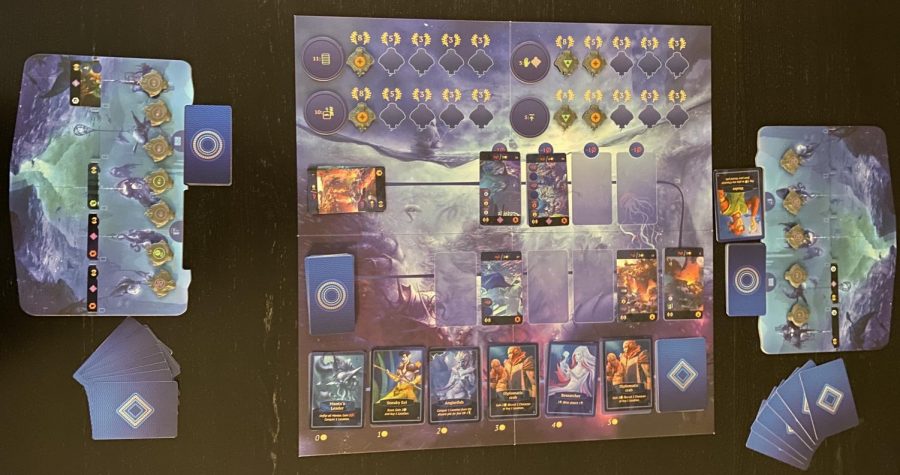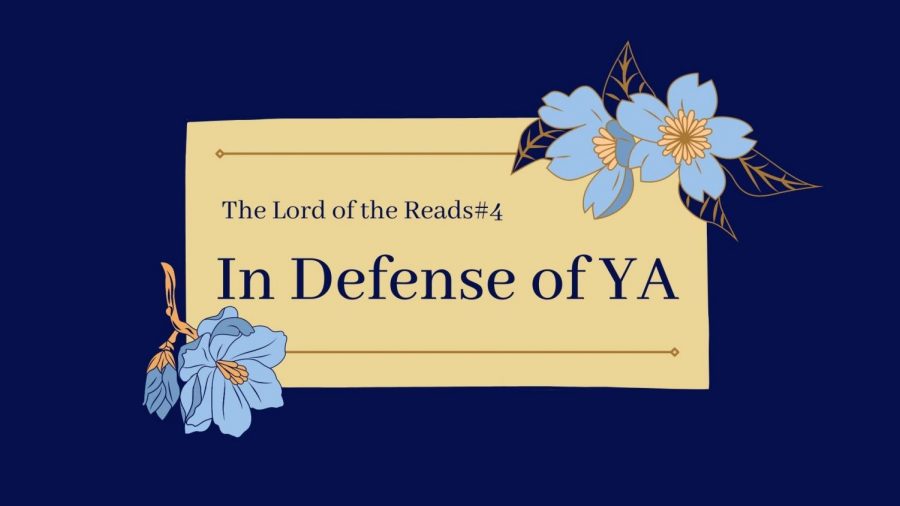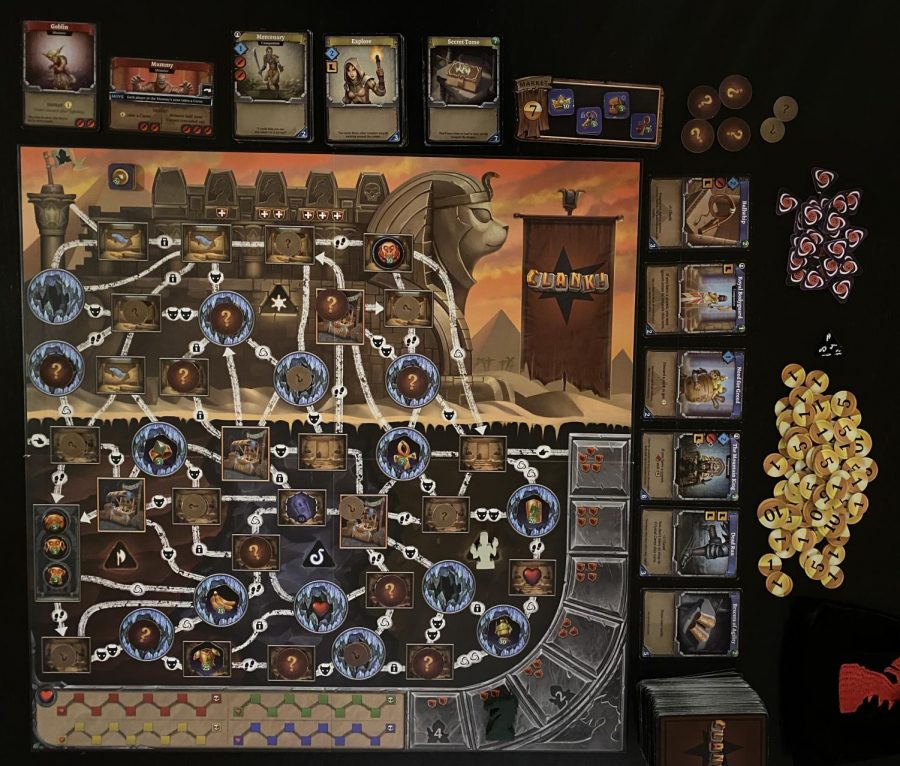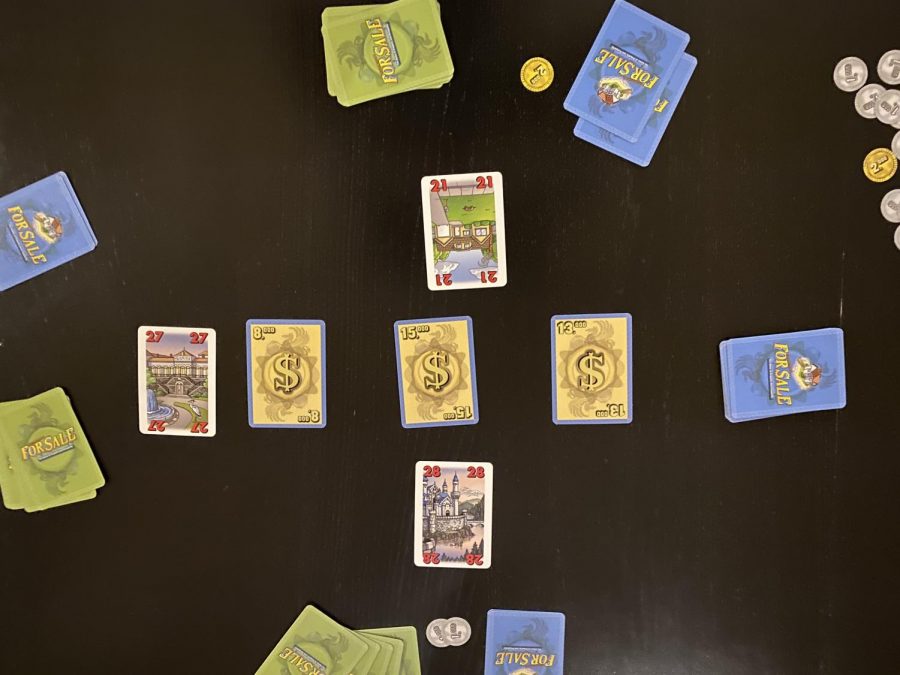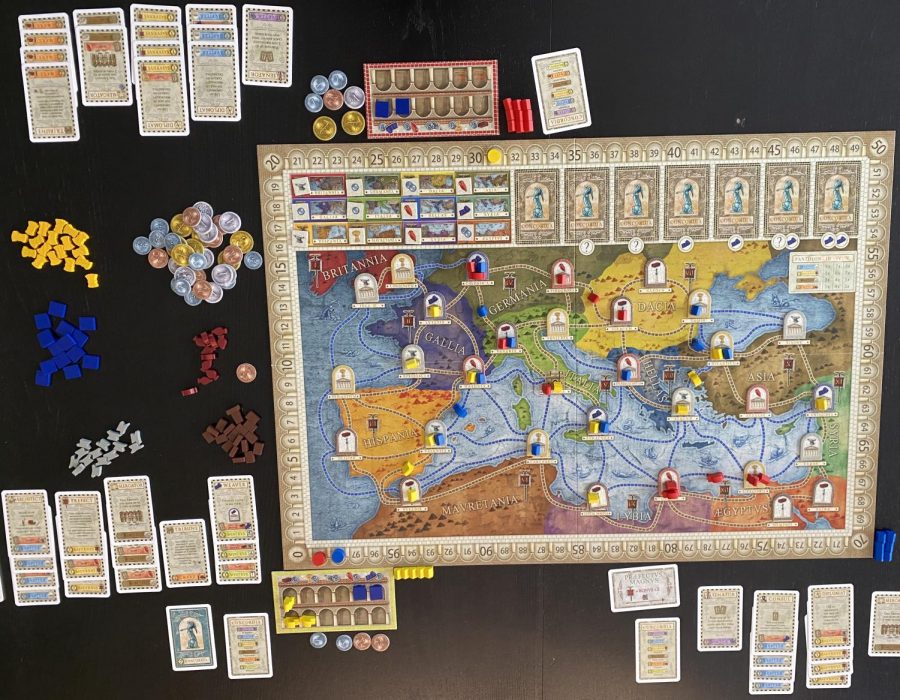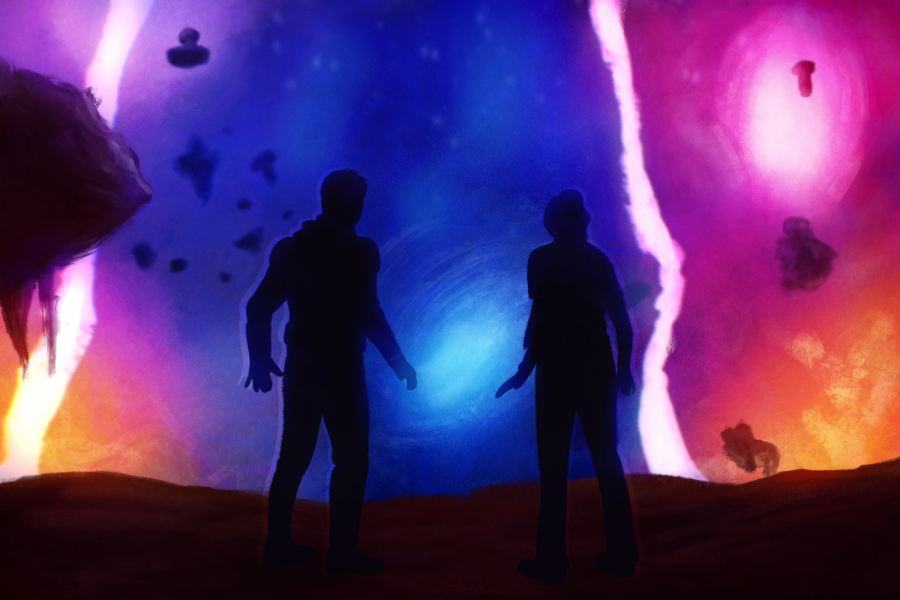Days of Wonder is a board game company that only releases one new game a year at most, but they put lots of effort into making sure that the components, artwork, and gameplay are nice. This week, I’ll be reviewing The River, published by Days of Wonder in 2018 and designed by Ismaël Perrin and Sébastien Pauchon.
The River is a gateway-level worker placement game where players collect resources and use them to score points on building cards. The unique aspect of the game is that players also collect tiles to place along the river of their player board, affecting how much of each resource they can produce and store while providing opportunities to score bonus points. Let me show you how it works, and then I’ll give my recommendation.
How to Play
The game takes place over a few rounds where players will take turns placing workers at various locations on the board that do different things. At the end of each round, there is a little preparation for the next round, and players continue to place workers as normal. The following gallery explains each of the locations as well as how players score points.
Final Thoughts
The River is a great game that fills the niche of gateway worker placement games. Most worker placement games out there are either extremely complex or involve too much luck in collecting resources, but this game finds a way around that while still being on the lighter end of games. However, the game does have a mix of positives and negatives. I’ll start with the positives and then give a few warnings you should know about before purchasing The River.
One of the aspects I like about The River is that I can teach it to anyone. It’s easy for people who don’t play many games to grasp the worker placement mechanism; there aren’t too many places for workers to go to and only a few possible strategies. I can easily teach The River to someone during one gaming session and then teach that same person a more complicated worker placement game such as Lords of Waterdeep or Kingsburg soon after, since it builds off mechanisms present in The River. Another bonus is that the lighter game meets the expectation of being short, clocking in at no more than 45 minutes. That being said, the game has a specific audience; if you’ve already played more complicated games, The River isn’t going to offer anything new.
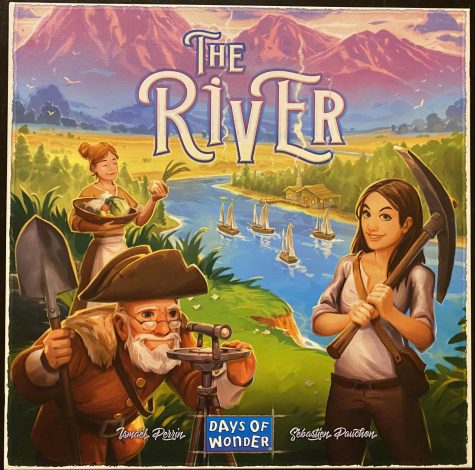
The last big positive I wanted to mention was the mechanism of placing tiles on your player board along the river. What I liked about that mechanism was that it immediately allowed players to start doing something different. Some players might focus on getting more resource production while others get additional storage houses or special abilities. Besides having a bit of asymmetry from the start of the game, each tile placed on the river has a different terrain. As players attempt to overcome their shortcomings in the middle of the game, they also have to start considering what terrains they need to get in order to match them in each column. The bonuses for matching terrains is a big deal during scoring, and I like the decision about how many and when to add to your river since doing so early may result in losing a worker or using the switch tiles action.
Despite the uniqueness of the river mechanism, there are a few problems with each part of the game. While building up your production and storage with the terrain tiles is interesting, I found all the tiles to be too similar. Some meadow tiles have special abilities or bonus points, but there needs to be more of them to keep games interesting. The other problem I had with the tiles was the harsh catch-up mechanism that involves losing a worker. I haven’t seen any other worker placement game where players that are ahead lose workers. I get that building up your river makes your resource actions stronger and gives you bonus points for matching terrains, but I don’t enjoy losing a worker because of that. In many rounds I’ve played, players will deliberately not work on their river to keep workers. I still agree that a catch-up mechanism is necessary and that the loss of workers is balanced, but I would have preferred a more fun solution than losing workers.
Another anomaly in the game design is the limited resource supply, meaning that you will only take out a certain number of resources based on the player count when setting up the game. In most games, the rules indicate that resources have an unlimited supply. The River attempts to try something less common, but it only adds an extraneous rule and cutthroat player interaction. Player interaction becomes tense because everyone wants to make sure they get the resources they need for the building cards, especially if the same resource is needed for most of the cards. As players improve their productions, they can choose to specialize in one resource and hog all the resources of that type. While multiple players could try this strategy and add another layer of complexity to the game, it’s not a very enjoyable scenario. It seems like an odd choice when considering the new gamer target audience and that the game can be played with an unlimited resource supply without having to change any other rules.
The last negative that I have is that this is a game that players outgrow quickly. After playing it a few times, there is nothing new to discover. There isn’t anything that changes from game to game that increases replay value. The newer you are to tabletop gaming, the longer this game’s life will be as it takes longer to figure everything out. Even once everything has been figured out, it is still a nice worker placement game to play every once in a while when a shorter game or new gamer is present.
Ultimately, it seems that I’m not too fond of The River. However, I will recommend it to anyone who is either new to gaming or has never played a worker placement game before; they will find it new and interesting, and I would consider playing this game in a scenario where I think another player might like it. It’s a game that I enjoy playing occasionally and sometimes choose not to play, so it’s going to get a 6.5 out of 10 for being aesthetically pleasing, sufficient for its intended audience, and slightly missing the mark in its game design.
[star rating=”3.25″]

